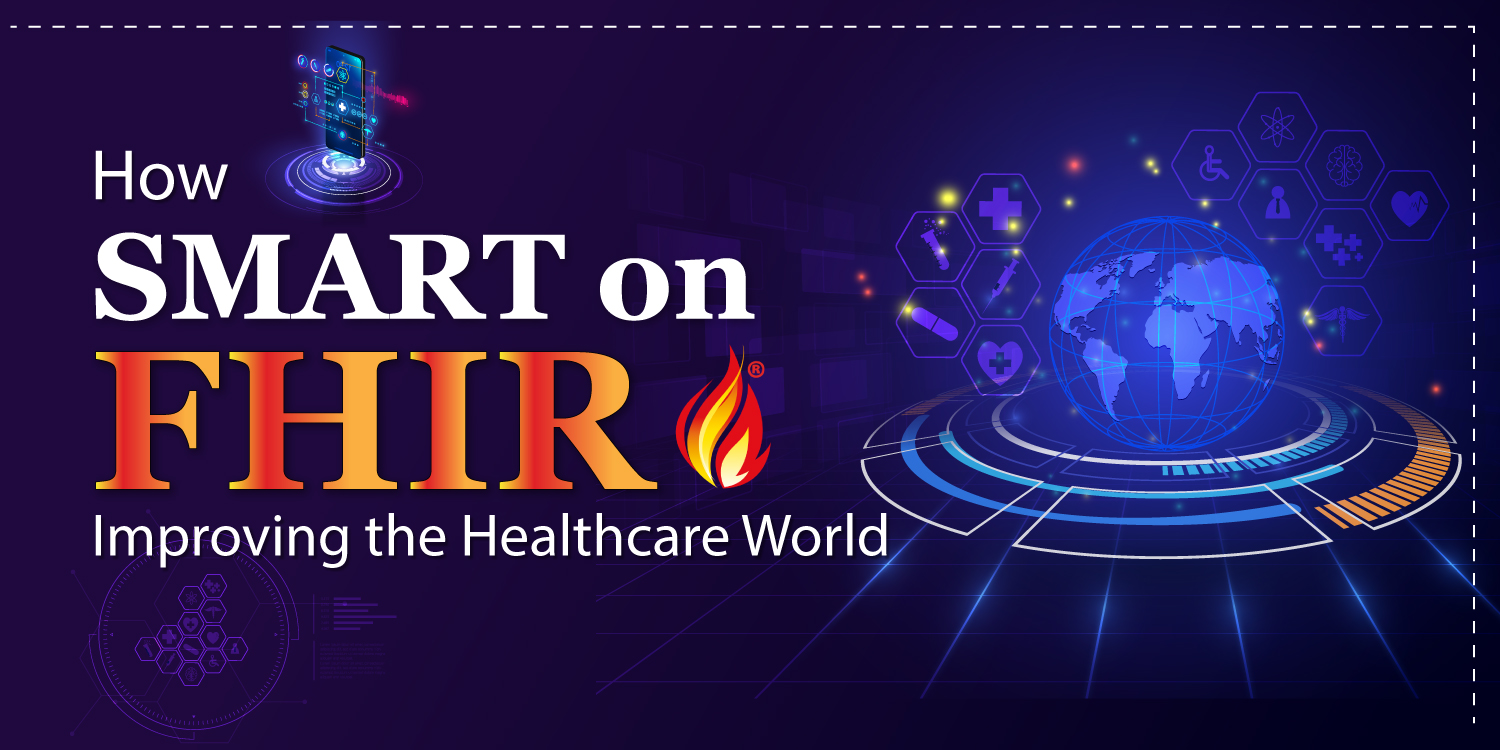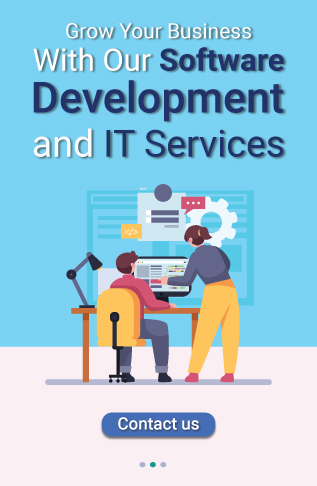SMART on FHIR is one of the biggest revolutions in the healthcare industry as it simplifies all the major issues related to electronic data exchange. It is very important to exchange data across multiple platforms or devices using the EHR system in healthcare software. So, the advanced technology of FHIR plays a vital role in data exchange. This smart technology improves healthcare facilities and provides multiple benefits to patients as they can share their records across a portal with their specialists through the software. Therefore, it is important to understand the delivery of healthcare, which demonstrates the significant role of SMART on FHIR.
This blog will teach you everything about SMART on FHIR and how it works. We will help you examine its components, advantages, current applications, and likely prospects of this exciting technology.
Table of Contents
ToggleUnderstanding SMART on FHIR
FHIR (Fast Healthcare Interoperability Resources) and SMART (Substitutable Medical Applications, Reusable Technologies) are the two main components of FHIR. So, let’s understand SMART on FHIR separately.
What is FHIR?
FHIR is a standard created by the HL7 organization, and it has been proposed to be used to exchange healthcare information electronically. The FHIR standard applies fundamental web technologies to support RESTful APIs and JSON sentence structures, enabling different systems to share information.
FHIR uses resources, which are often a set of localized elements within the overall health data. Each corresponds to a certain kind of data, such as the patient’s data, the ordered medications, or the test results. These resources are intended to be readily available and collectible, thus ensuring consistency and the demurrage-free circulation of data.
What is SMART?
SMART on FHIR is an extension of FHIR in that it creates a structure for applications that can articulate with a range of healthcare systems. SMART aims to innovate healthcare applications that will enable interoperability and usability.
Also, the SMART framework consists of guidelines and tools for developing interchangeable and modular applications that work in various contexts of the healthcare domain. This way, applications developed with the help of SMART on FHIR can function in different contexts without significant adjustments.
The Benefits of SMART on FHIR
SMART on FHIR offers numerous benefits to healthcare providers, patients, and developers. These advantages include improved data access, enhanced interoperability, increased efficiency, and greater patient empowerment.

1. Improved Access to Information
The first advantage of SMART on FHIR is that it can improve the manner in which Big Data healthcare users acquire healthcare information. Because SMART on FHIR defines how data is stored and shared, providers can rapidly locate necessary information from numerous sources.
For instance, a physician will be able to view his or her patient’s entire medical record, including data supported by other healthcare facilities. This will allow for a broader understanding of the patient’s health and enhance the care provided to the patients.
2. Enhanced Interoperability
Fhir interoperability simply refers to the extent to which different systems are integrated to communicate with each other. FHIR maintains an official standard that multiple healthcare systems and applications should follow, which gives it an advantage.
This means that various EHRs, personal patient apps, and other healthcare applications can exchange information without a problem. Improved continuity of care minimizes the possibility of medical mistakes and guarantees that different health providers working on the patient’s case have a clear view of the patient’s current health state.
3. Increased Efficiency
SMART on FHIR integration enhances the overall healthcare delivery by enhancing the exchange of information from one system to another and minimizing data entry. For instance, when using apps based on the SMART on FHIR platform, patients’ data are retrieved directly from the EHR systems, which saves time on data entry.
This efficiency is automatically translated into time savings for healthcare providers and a reduction in bureaucratic demands. It also aids in reducing possible errors that are common when keying in information, which poses a threat to patient safety.
4. Greater Patient Empowerment
Using SMART on FHIR gives patients more control of their health information. They are intended to provide information to patients regarding their health records, care plans, admittance and discharge, and progress summaries using FHIR-compatible apps.
For instance, a patient might have an application that shows laboratory results, reminds them to take medicine, or creates appointments. These enhancements in the accessibility of the customers’ personal health information enable the customers to participate more actively in managing their health.
Real-World Applications of SMART on FHIR
SMART FHIR is being utilized in various ways to improve healthcare delivery. Here are some real-world examples of how this technology is being applied:
1. Appointment Scheduling
A real-life example of how they can use SMART on FHIR is appointment setup. Smart on FHIR applications can link with a patient’s medical record and previous appointments to schedule new appointments and help manage schedules.
For example, a client can come online to see the available appointments. Now they can book an appointment with a particular specialist to get the suitable treatment. This convenience enhances the overall experience of going to the physician. Moreover the notification ensures that patients get alert of their schedules and do not fail to attend the physician’s appointments.
2. Medication Management
It is also worth mentioning that with the help of FHIR, medication management is also performed. Some of the applications that use this standard include patients’ adherence to drug regimens, notification for refill suggestions, and the monitoring of possible drug interactions.
These apps extract data from EHR systems to provide individual medication plans and reminders. This functionality assists patients in sticking to their advised dosages and lessens the possibility of medication-related complications.
3. Remote Monitoring
Another important use case of SMART on FHIR is remote monitoring. Different health apps can monitor blood glucose levels, pulse rate, blood pressure, and other parameters and report these to doctors in real-time.
This results in constant observation of the patient’s condition, which in turn helps healthcare providers monitor the evolution towards improvement and intervene when necessary. It also helps in the better management of the patient’s health, hence enhancing the general outcome.
4. Clinical Decision Support
SMART on FHIR improves clinical decision-support systems by providing healthcare providers with timely information. EHR care coordination can provide the patient care team with application alerts, suggestions, and best practices.
For instance, a decision-support application might notify a doctor of potential interactions between medications or recommend specific tests that could be undertaken depending on the patient’s characteristics. This support enables clinicians to make better and more accurate decisions for their patients.
Challenges and Considerations
While SMART on FHIR offers many benefits, it also presents certain challenges and considerations that are:
1. Data Security and Privacy
Protecting and maintaining the privacy of healthcare information is always a major concern. FHIR applications is required to keep patients’ data confidential and prevent breaches.Therefore it must meet specific security requirements.
Both developers and healthcare organizations need to ensure that digital data is protected with advanced forms of encryption and access restrictions. Staying in compliance with rules to protect data privacy, such as the Health Insurance Portability and Accountability Act (HIPAA), is crucial.
2. Standardization and Integration
For interoperability to be complete, all-consuming systems and applications must adhere to the standard specified by FHIR. Since the FHIR specification is fully extensible and only a recommendation standard, differences in the implementation or interpretation of this system may cause integration issues and thus block the sharing of information.
Therefore, continuous processes of developing and improving the FHIR implementation are important to work around the above challenges. Hence, proper cooperation with stakeholders such as developers, healthcare providers, and standardization organizations would be required to guarantee the right and unified application of SMART on FHIR.
3. User Adoption
Factors affecting SMART on FHIR application success are the degree of acceptance and usage by end-users, healthcare practices, and patients. Thus, factors such as usability and user experience are some of the determining aspects that would indicate how popular these apps will be.
The developers must pay close attention to the user interfaces since they play a major role in the adoption process. Training and support elements also stimulate the change towards using the tools based on the FHIR software.
4. Cost and Resource Considerations
The use of SMART on FHIRs may require training on the program, infrastructure costs to integrate the system with the EMRs, and ongoing costs to maintain the program. Healthcare organizations must identify the Return on Investment and optimize the distribution of the resources for such purposes.
However, as with most technological innovations, this shift towards SMART FHIR can create a long-term savings opportunity while the investment in technology and personnel time must be factored in.
The Future of SMART on FHIR
The future of SMART on FHIR looks promising as technology advances and healthcare becomes increasingly digital. Several trends and developments are likely to shape the future of SMART on FHIR:
1. Expansion of Use Cases
Today, SMART on FHIR is still considered an emerging framework, but as people use it more often, we will likely witness the growth of new use cases. Additional applications and tools will be developed over time, targeting different segments of the preventive and treatment continuum.
SMART on FHIR-based solutions will further engage patients, adopt technology to better match treatments to patients, and improve healthcare in general. SMART on FHIR is easily scalable, as it can effectively incorporate new expectations and advances.
2. Integration with Emerging Technologies
Introducing SMART on FHIR with other developing technologies, it is possible to name blockchain, artificial intelligence and machine learning. They can extend the benefits of SMART on FHIR applications and contribute to new developments in the healthcare field.
For instance, AI apps can then utilize SMART on FHIR data to help render anticipation analysis and recommendations. Blockchain technology can also be used to maintain health data security and authoritativeness.
3. Global Adoption and Collaboration
The healthcare sector realized the benefits of using SMART on FHIR at the global level. This proposal will be possible with the growing emergence of this standard among countries and organizations, meaning that trends towards the globalization of standards will be witnessed.
FHIR adoption worldwide will promote cross-border information sharing and healthcare information exchange on a global level. To this end, different international stakeholders need to be integrated so that the above goals can be realized.
4. Focus on Patient-Centric Solutions
The future improvements of SMART on FHIR will most probably focus on patient-oriented solutions. Such applications will continue to focus on patients and their active participation and self-management, thus meeting the new direction in the sphere known as patient-centered care.
The FHIR approach will greatly enhance patients’ ownership of their health records and meaningful applications, encouraging the proactive health paradigm.
Planning to integrate FHIR system in your healthcare app?
DreamSoft4u offers you best custom software integration.
Conclusion
SMART on FHIR is effectively transforming the healthcare industry by improving a new era of interoperability. This new standard builds on FHIR to improve the healthcare system’s connectivity and effectiveness. Healthcare software development company delivery dynamic results when new capabilities are added to SMART via FHIR or comparable technologies with which it interacts, its transformability is expected to expand. SMART on FHIR will be vital in addressing data protection issues, defining standards, disseminating innovations, and keeping up with developments.
FAQs
Q1. What is SMART on FHIR?
SMART on FHIR is a standard that helps healthcare apps integrate easily with electronic health records (EHR) systems, using guidelines to ensure compatibility and security.
Q2. How does it improve interoperability?
It provides a common framework for apps and EHR systems to communicate and share data effectively, reducing errors and improving data access.
Q3. How does SMART on FHIR ensure security?
SMART on FHIR ensures security by requiring apps to comply with HIPAA regulations, which involve strict data protection and privacy measures.
Q4. Can SMART on FHIR be used with any EHR system?
SMART on FHIR is designed to work with any EHR system for HIPAA compliant Telehealth platfrom, making it versatile and widely applicable.
Q5. How does SMART on FHIR benefit healthcare providers?
It streamlines workflows by simplifying data sharing and app integration, which reduces administrative tasks and improves overall efficiency.





















